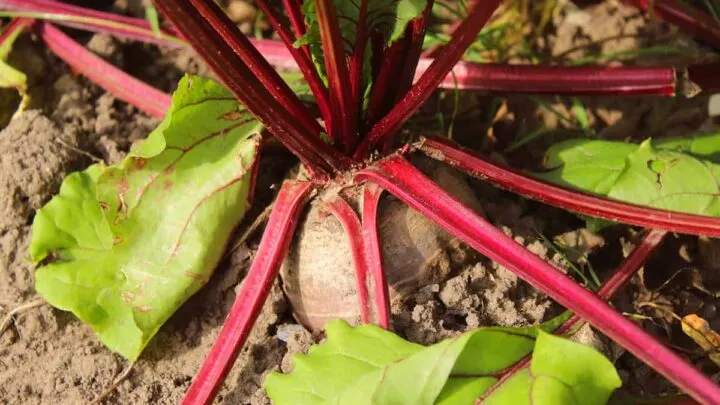Beets are one of the healthiest and most flavorful root vegetables to grow, and many gardeners will argue that they are relatively low maintenance in regard to care. However, because beets grow underground, the above-ground parts of the plant, the stems, and leaves, often indicate to its grower when health issues may arise. Some gardeners may be wondering, why are my beetroot leaves wilting?
Some possible causes of beetroot leaf wilting include too much or too little water, disease, nutrient deficiency, or pest infestation. Although beets are cold tolerant and less common, extended frost exposure may also cause beetroot leaves to wilt.
Read on to learn more about the causes and solutions of beetroot leaves wilting.

Over And Under Watering
Inappropriate hydration levels often cause leaf wilt on any plant. Too much or too little watering can lead to beetroot leaves wilting. Determining watering quantities and schedules for your beet crop will vary depending on the temperatures and humidity in your growing environment and the age of your beet plants.
When beets are young, they typically do not require as frequent watering as when they are near or mature. Because weather and soil conditions differ, the best rule of thumb is to maintain soil so that it is consistently moist without being soggy. Overly soggy soil can lead to other plant issues such as disease, pests, and wilting leaves.
Diseases
Although beets are known for their hardiness, they are still susceptible to some diseases. Fungal diseases are more common in beet plants and can often be avoided by not overwatering. While it is less likely for a viral disease to affect your beet crop, it is certainly possible. Rotating the crop location each season can help mitigate these diseases.
Fungal
Downy mildew, root rot, and crown rot are the most common fungal diseases to affect beet plants. In addition to wilting leaves, these diseases can be identified by yellow or red spots on the leaves and brown or black spots on the beetroot itself.

In addition to appropriate watering, planting beets in loose, well-draining soil is ideal for avoiding fungal diseases. If leaf wilting is noticed on a beet plant and is believed to be caused by a fungal disease, it’s essential to remove any infected leaves immediately to save the beetroot and remaining leaves.
If you can identify fungal diseases spreading to the beetroot itself, the entire plant should be removed so as not to infect the rest of the crop.
Viral
Viral diseases affecting beets include curly top disease, damping off disease, and verticillium wilt. Damping off and curly top diseases occur among seedlings and young plants, causing them to wilt and die far before harvest time.
Verticillium wilt disfigures the leaves, causing them to dry and die off, eventually killing the beetroot. Rotating crop locations each season is the best prevention of these viral diseases.
Nutrient Deficiency
Typically beets will flourish in loose, well-draining, nutrient-rich soil. These tests can be purchased online and at most garden centers. Borax can be added to soil to increase boron levels and create an excellent balance between acidic and alkaline components.
Phosphorus, potassium, and nitrogen can also aid in keeping soil levels healthy. These elements can usually be purchased in a combined all-purpose NPK fertilizer and applied to soil every few weeks.

Pests
Due to the vegetable growing beneath the earth in consistently moist soil, beetroot plants are susceptible to several pests. Depending on your growing environment, some pests may be more of a problem than others; however, the following pests are relatively standard in most locations.
Aphids
Aphids are garden pest that adversely affects many of our favorite garden varieties, including beetroot. Aphids may not be noticed when they first arrive, but they quickly multiply and can kill a plant if not mitigated. Treating infested leaves with a dilution of soapy water or neem oil is ideal for getting rid of aphids.
Flea Beetles
Flea beetles are small like aphids but have noticeably long legs. They eat holes in the leaves of beetroot plants and can quickly cause blight, in addition to leaf wilt. A soapy water dilution or sticky fly traps can help mitigate flea beetles.
Leafhoppers
Leafhoppers draw sap from the leaves of beetroot plants, causing wilt and disease. These pests tend to live underneath the leaf and can leave white spots where they suck on them. Leafhoppers can be removed by hand or using a diluted neem oil spray. Soapy water mixtures are less effective with these pests.
Final Thoughts on Growing Healthy Beets
In many parts of the world, beets can be grown year-round or for multiple growing seasons. Knowing the conditions of your geographic location and the best growing schedule can help you avoid many of the issues described in this article.
Planting at the appropriate time for your living is essential to keeping any beetroot variety happy. In addition, several beet varieties have been identified as disease and pest-resistant and may be ideal for growing in areas where moisture is high, and pests are abundant.
Taking all of these factors into account for your beet crop will more likely result in a healthy abundant beet harvest.

Hi there, my name is Allie and welcome to my blog; GareningWithAllie!
Much of what you see written here is just our personal experiences with gardening. Along with the content I write here, there is also a unique collection of gardening topics covered by some of our close friends. I hope you find everything you read here to be helpful, informative, and something that can make your gardening journey the most lovely experience ever! With that said, Happy Gardening!
